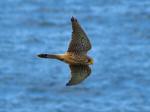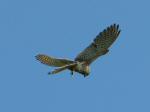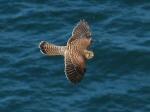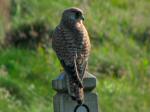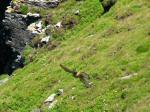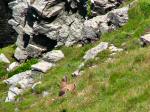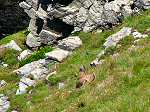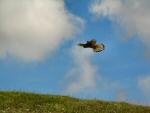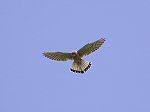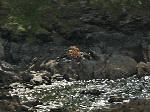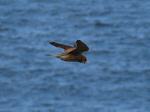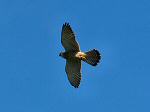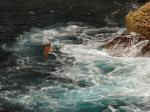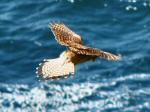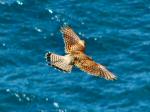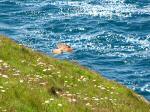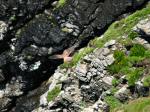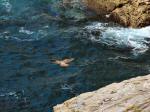Latin name - Falco tinnunculus
The bird of prey most often seen by everyone as it hunts, hovering beside
main roads, fields, moorland and heath avoiding only areas of dense forests
preferring open rough ground. This habit of hovering means they are one
of the easiest falcons to spot. Whilst hovering they have the extraordinary
ability to keep their head totally still allowing them to pinpoint and
catch small mammals by sight alone. The male bird has black-spotted chestnut
brown upper-parts, a blue-grey head, a blue-grey tail with a single black
bar and buff coloured under-parts with black spots. The female is danker
in colour with black barring on its upper-parts, wings and along the length
of the tail, and the under-parts have black streaking rather than black
spots. Young birds are similar to the female in appearance. They feed
on small mammals (specially voles), insects, worms and small birds which
they will take in flight. |
